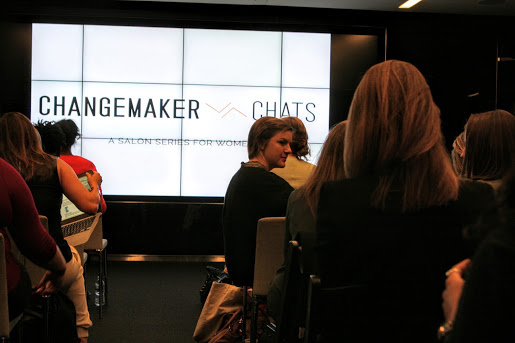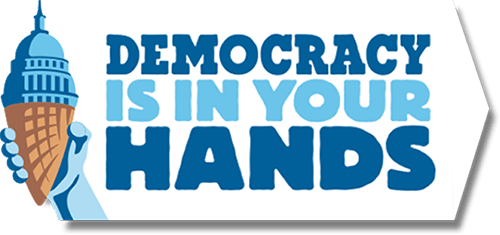by Anne Rackow
Many holidays are celebrated out of the office by spending time with loved ones, eating particular foods, and participating in various family traditions. But what if they could also offer opportunities to demonstrate corporate social responsibility and make an impact? This goes for all holidays – even those you may forget about until you suddenly realize you have a three-day weekend. In fact, some of those national holidays might be the perfect places to start.
We first started thinking about this in response to Columbus Day, which we and many others now choose to refer to as Indigenous People’s Day. This day is an important opportunity for social impact, in particular, because of its controversial origin. In case you aren’t aware of what we’re referring to, here’s a little background:
It is widely discussed that Columbus Day honors a man who did not discover America, but rather invaded a land populated by peaceful people, and then systematically enslaved and even murdered its inhabitants. This article by Irwin Ozborne explains in detail how Christopher Columbus’s “discovery” of America “resulted in mass assimilation, raping, slaughtering, enslaving, and intention to wipe out all evidence of a native population of between 50 and 100 million indigenous people from the land — the greatest genocide in recorded history.“ Some of the atrocities he notes include:
- Abducting and selling children into the sex trade as young as nine-years-old
- Mass raping of women and children
- The amputation of limbs if slaves were not producing ‘enough’
- Offering cash rewards for the scalps of men, women, and children as proof of murder
- Intentionally spreading smallpox disease, an early means of biological warfare
- Death marches of more than one-thousand miles to these reservations in which, if you were unable to continue the walk, you were left for dead with family members prohibited from offering assistance
As a result, many recognize that we either need to stop celebrating this tragic part of American history, or change who and what, specifically, we are honoring. Some states have already begun to do this. South Dakota has celebrated Native American Day instead of Columbus Day since 1990, and in recent years, cities and states like Seattle, Denver, and Vermont have also begun to acknowledge the injustices perpetrated against native populations by Columbus and his fellow explorers. They have renamed the holiday, and use the day to lead important conversations around the historical and current discrimination and maltreatment of indigenous people.
That got us thinking about what we can do around holidays like Indigenous People’s Day, and other federal holidays that are less controversial but provide opportunities for impact nonetheless. While it’s wonderful for local community members and state governments to spread awareness and create change, we began to ask ourselves what socially conscious businesses could be doing on this holiday and other holidays to have a positive social impact on their employees, customers, and communities.
According to the Pew Research Center, about 50% of states and U.S. territories get time off from work for Indigenous People’s Day. As a business, you have an opportunity to encourage a different, more informed, and respectful manner of celebration. For example:
- Refer to the second Monday of October as Indigenous People’s Day in relevant company documents and communication, regardless of what your city or state calls it
- Share information about why you’ve opted to make this change as a company
- Encourage your employees to attend an event or celebration hosted by an indigenous group on their day off
- If your local and state law allow for it, provide the option for employees to work on the second Monday of October in exchange for a different day of
For more ideas on how your business can honor indigenous populations, check out this article by Ecopreneurist.
Celebrating Other Holidays
While Columbus Day is in a league of its own in terms of impropriety, there are many other federal holidays that can also serve as opportunities to raise awareness and participate in service activities related to important social justice topics. When one of these holidays is approaching, contemplate what your company can do make the most of the day and the time off from work. You can start by asking yourself the following questions:
What is this holiday about, and what social justice issues are related to it? Here are some examples to get you started:
Veterans Day: The U.S. Department of Veterans Affairs calls Veterans Day, “a day to honor American veterans of all wars.”
Examples of Relevant Social Justice Topics:
Veteran homelessness
Mental health issues associated with military service
Policies that make it difficult for veterans to seek treatment for their mental and physical health
Martin Luther King, Jr. Day: The King Center says, “the King Holiday honors the life and contributions of America’s greatest champion of racial justice and equality, the leader who not only dreamed of a color-blind society, but who also lead a movement that achieved historic reforms to help make it a reality.”
Examples of Relevant Social Justice Topics:
Modern day racism in America
Institutionalized racism
Labor Day: According to the Department of Labor, Labor Day “is dedicated to the social and economic achievements of American workers. It constitutes a yearly national tribute to the contributions workers have made to the strength, prosperity, and well-being of our country.”
Examples of Relevant Social Justice Topics:
Setting a fair minimum wage across sectors
American companies sourcing products made with slave labor
The gender pay gap
How can I educate my employees or colleagues around these relevant social justice issues?
- Post informational flyers and handouts in break rooms, on community boards, and in other shared spaces
- Include a special feature section in the company newsletter that shares information on the topic and links to further reading or helpful resources
- Host a “lunch and learn” meeting where staff can volunteer their lunch hour to learn more about a topic or issue
How can I use this holiday to engage my employees in relevant activities that have a positive social impact?
- Host voluntary company-wide community service days on or around the holiday that take place in a location or with a population impacted by the topic
- Collect food, clothing, toys, or money for local communities impacted by the topic during the weeks leading up to the holiday
Are there steps we can take to raise awareness about the related social justice topic as a company?
- Share information and show support on your company’s social media platforms, as appropriate
- Encourage or incentivize employees to share information and show support on their personal social media networks
As we go into a holiday-heavy season, we’re starting to think through how we as a company can celebrate in a way that aligns with our own values, and help other companies do the same. In the coming months, we’ll be sharing tips on what your company can do to be socially conscious around Halloween, Thanksgiving, and Christmas.
Do you have creative ideas on how companies can use holidays to do good? If so, please share with us by:







































































